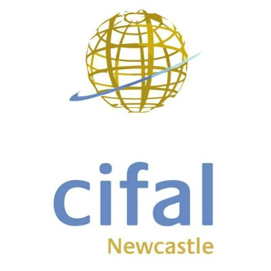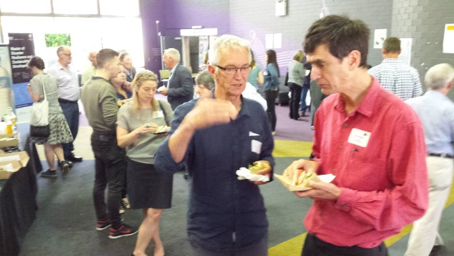|
Around 80 people gathered at Newcastle University for the inaugural Active Transport conference "Active Transport: The Richmond Vale Rail Trail Conference". This conference, run by The Tom Farrell Institute for the Environment, was generously supported by the Donaldson Conservation Trust, as well as a number of other organisations, including Hunter Innovation and Science Hub, National Science Week, Inspiring Australia and the NSW Government. With 2017 being the International Year of Sustainable Tourism Development, the first session was aptly named "Pathways to Sustainable Tourism". This commenced by looking back at the international conference "Pathways to Sustainability: Local Initiatives for Cities and Towns" hosted in Newcastle in 1997, supporting the UN action plan on sustainable development Agenda 21 that was agreed at the Rio Earth Summit. The Newcastle Declaration was endorsed at the 1997 conference, declaring that "There is growing evidence, however, that the future of all life on Earth is still in peril. There is an urgent need to accelerate and assist action at all levels, particularly locally, if the global sustainable development objectives of Agenda 21 are to be realised". We heard about the Wonnarua Nations Pathways To Sustainability, looking at their history and development, including culture and heritage, economic development, sustainability and active transport initiatives, within the context of their "Australian Healthy Communities Model". The conference was underpinned by the UN Sustainable Development Goals (SDGs), and we discovered that these goals can become our guide for sustainable tourism development, not as a bolt-on but as a way of thinking. Rounding out the first session, in understanding the tourist as an end user, we saw that alternatives need to be developed to the current male-centric paradigm of tourism destination development. Session 2 - Active Transport - Smart and Healthy, focused on the benefits and local initiatives on Active Transport. We looked at the prevalence of obesity in different countries and how that is inversely proportional to the level of active transport in those countries. The health and other benefits of active transport were expounded and what we could do to make Newcastle the perfect active travel city. For example, UK studies found that commuting by bicycle or walking reduced mortality by 30-40%. Using the Health Economic Assessment Tool (HEAT), you can quantify the benefits of active transport. Applied to the proposed CycleSafe Network (CSN), through reduced health costs, the CSN would have a payback period of only 18 months! This is also expected to bring to the region more than twice the return on investment from the Hunter Expressway. In Newcastle and Lake Mac 90 km of cycleways currently exist. CSN would expand this by an additional 140 km. The CSN aligns with current cycling strategies of Newcastle and Lake Macquarie councils and would integrate with public transport increasing its use. The CSN is expected to reduce congestion, create Jobs, tackle childhood obesity and keep the environment clean. The session was completed by bringing us up to date with the revitalisation plans for Newcastle, including an inner city cycleway strategy and the Local and Neighbourhood Centres Program. Following a quick lunch, the next session, entitled "Rail Trails and Sustainable Living", commenced by looking at the history of the Fernleigh Track and then the future aspirations of Lake Macquarie council in the area of active transport. The focus of the conference then turned to rail trails. There are 100 rail trails in Australia, but only 5 in NSW. Many rail trails are in regional and rural Australia and are generally built along publicly owned disused railway corridors. Rail trails provide safe, flat routes away from dangerous roads and are for "non-motorised" users such as cyclists, walkers, runners, and sometimes horse riders. They provide access into into the countryside for people of all abilities but often have some urban component with some active transport opportunities. We learnt about recent successes and learnings from Victorian rail trails and the grass roots actions needed to get a trail underway. The final session of the day focused on the Richmond Vale Rail Trail (RVRT). This commenced with an interesting run through the past history of the Richmond Vale line. We then learnt about the ecology of the Sugarloaf area, including the Atlas of Living Australia, endemic species and how species can be used to highlight geographical boundaries. Closing the day, we learnt latest information from the design and environmental approvals for the RVRT.
For more information on the conference and access to the presentations see.
0 Comments
Leave a Reply. |
News Archive
|














 RSS Feed
RSS Feed


